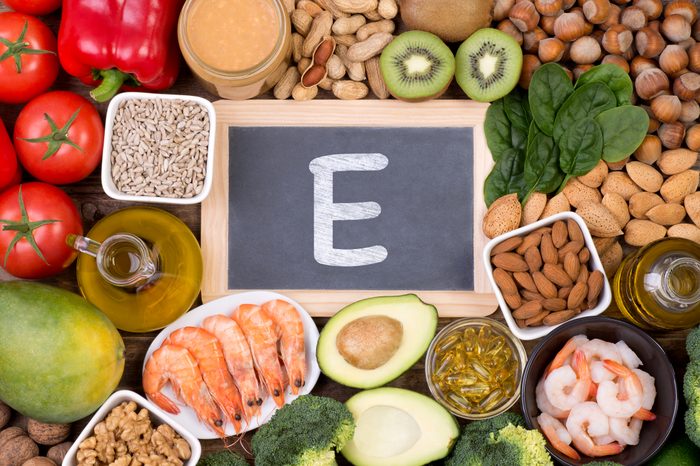
The powerful antioxidant vitamin E plays an important role in many body functions.
Want to bolster your immune system for cold and flu season? Protect your skin from UV damage? Reduce your risk of certain cancers? Taking a vitamin E supplement might seem like an easy way to boost your intake, but many experts warn against it. The National Institutes of Health (NIH) notes that vitamin E offers real benefits when consumed in food, but it’s a different story when it comes in supplement form. They say that high doses of it in supplement form have been linked to a host of health problems including an increased risk of bleeding and stroke. For the best ways to increase your vitamin E levels, eat more of these vitamin E-rich foods.
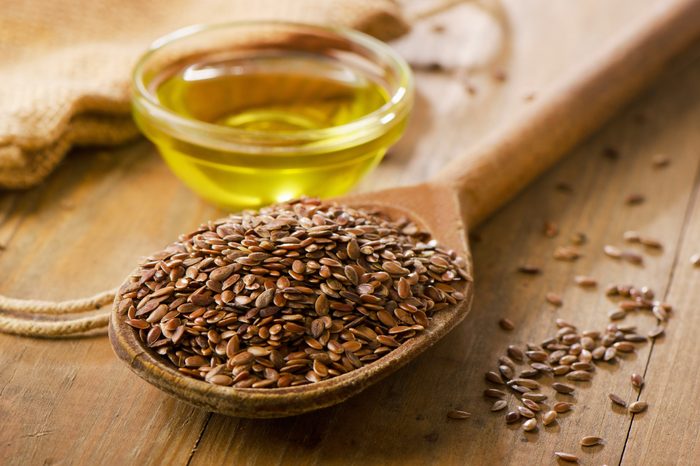
Drizzle on oil
A variety of vegetable and seed oils are good sources of vitamin E. “Vegetable oils like wheat germ, sunflower, and safflower oils are among the best sources of vitamin E,” notes the NIH. For instance, one tablespoon of sunflower oil provides about 28 percent of your daily recommended serving of vitamin E. Wheat germ oil, one of the best sources, packs 100 percent of the daily value. They also state that corn and soybean oils contain some vitamin E.
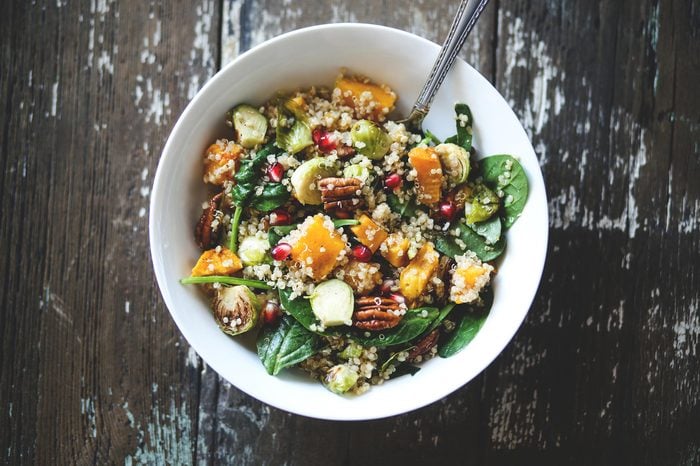
Toss a healthy salad
Spinach, broccoli, and even kiwi contain vitamin E. Cooked servings of spinach and broccoli offer more vitamin E per serving than the raw vegetables do. According to research published a 2017 issue of Food Science and Biotechnology, vitamin E contains four tocopherols; a-tocopherols are thought to have the most antioxidant activity. Antioxidants are good, right? Well, the journal notes that “cooking fresh broccoli, chard, mallow, crown daisy, perilla leaf, spinach, and zucchini lead to a significant increase in α-tocopherol, while cooking potato, sweet potato, and carrot lead to a significant decrease in α-tocopherol.” So, go ahead and cook that spinach and broccoli!
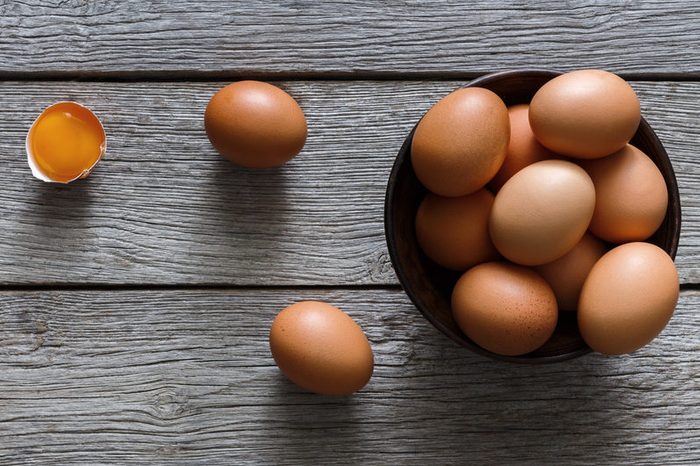
Make eggs a regular part of your diet
Those delicious yellow yolks have vitamin E and other nutrients; the whites contain mostly protein. Interestingly, it’s how you eat eggs that really boosts your vitamin E intake. The key is adding eggs to your vegetables, as you might in a salad. Doing so may help increase vitamin E absorption when eaten along with raw mixed vegetables. At least that’s what a small study published in a 2016 issue of The Journal of Nutrition says. The journal states that “the consumption of cooked whole eggs is an effective way to increase the absorption of α-tocopherol and γ-tocopherol from co-consumed low-fat foods that naturally contain vitamin E, such as a raw mixed-vegetable salad.” Remember, a-tocopherol plays a role in antioxidant activity and is in veggies like spinach and broccoli.
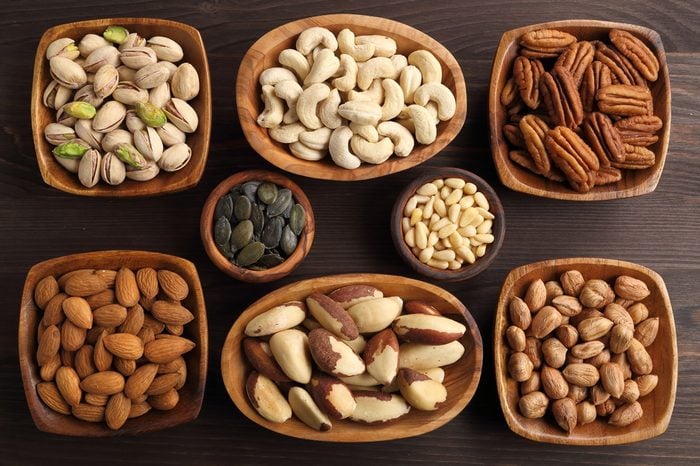
Nosh on nuts
Good news for nut lovers! The NIH says that nuts like peanuts and hazelnuts are “among the best sources of vitamin E.” They call out one in particular: almonds. Almonds, the NIH notes, are especially rich in vitamin-E. Eating almonds can also help keep your good cholesterol levels (LDL) where they need to be, so don’t pass them by.
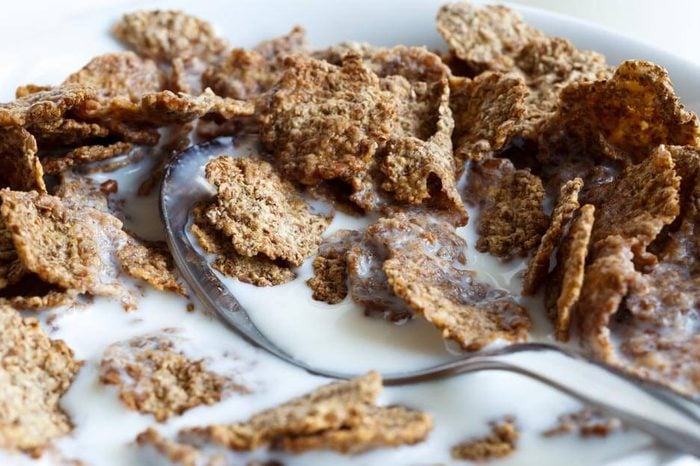
Eat fortified cereal
Many morning grains are fortified with vitamin E, so you can get your daily need in your bowl. However, amounts of this vitamin can vary considerably. Some brands have none, while others have 100 percent or more of the daily value. The NIH recommends checking the label. This way, you can be sure that what you’re eating is fortified with good amounts of vitamin E. FYI, in addition to fortifying cereals with vitamin E, some food companies also add it to fruit juices, margarines and spreads, so keep an eye out for those labels too.

